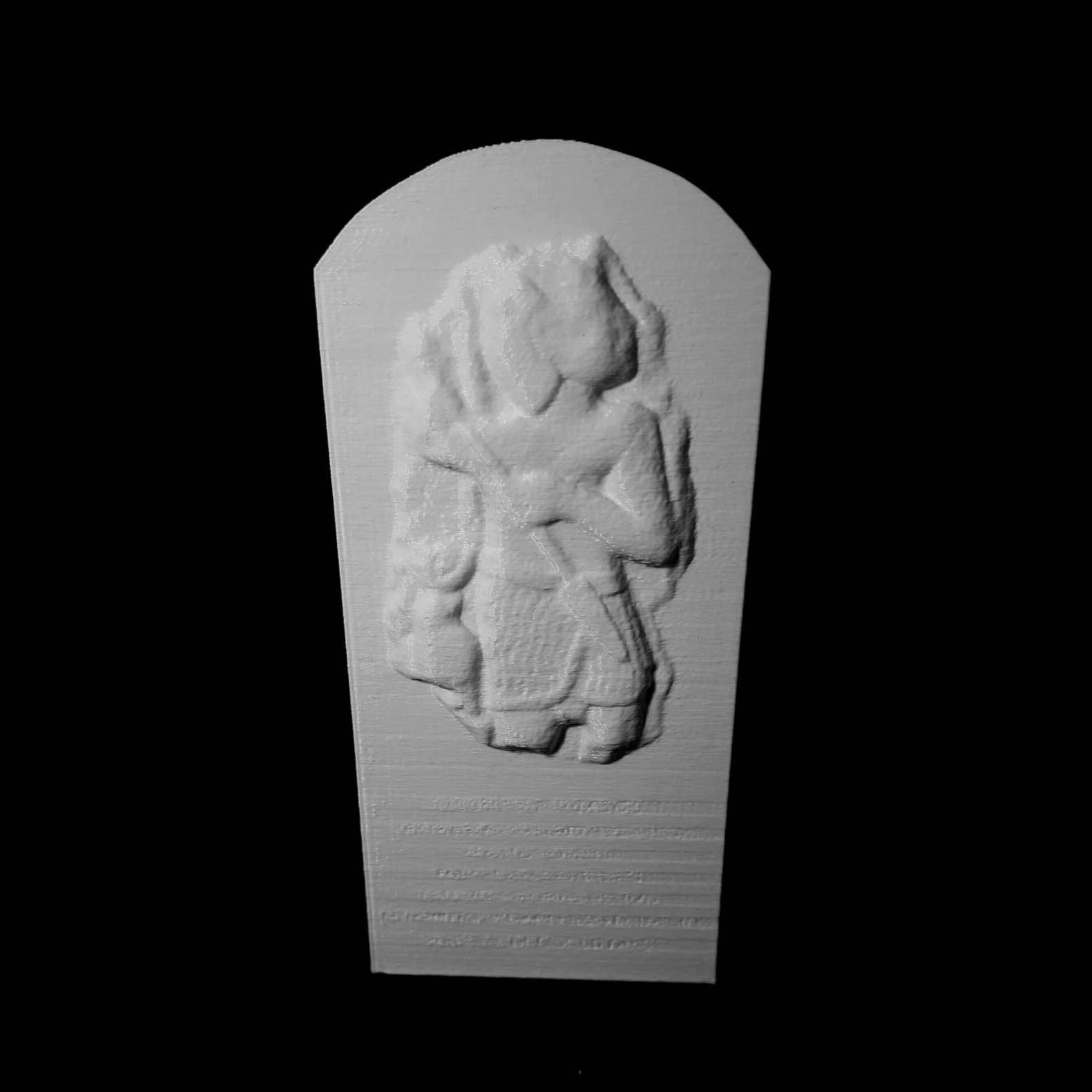
Shihan Stele, Stele representing a warrior from the land of Moab at The Louvre, Paris
myminifactory
This basalt stele, often referred to as the Shihan stele, was the oldest monument from the Holy Land discovered in the Louvre's collection until excavations after World War I uncovered its equal. The figure depicted on the stele, long identified as a king or prince, may also be a warrior god. The dating of this work remains uncertain, with estimates ranging from the Late Bronze Age (c. 1200 BC) to the Iron Age (c. 800 BC). This basalt stele was discovered in 1851 by Félicien de Saulcy during his famous journey around the Dead Sea, marked by numerous important cartographic, archaeological, and entomological observations. Too heavy to be transported, it was nonetheless promptly published, and the precision of the mapping allowed the Duc de Luynes to locate the stele in 1864 and bring it to France for presentation to the Louvre. It was found at Redjom el A'abed, a site on the eastern shore of the Dead Sea near Shihan, situated at the heart of the biblical Land of Moab. The site itself was not excavated, leaving the archaeological context of the find unknown. However, it could have been brought there from another site as well. The edges of the relief have been broken off to reduce weight and facilitate transport. The figure holds a spear with its point facing downward, raises his right arm, and crosses his left arm over his chest. He wears only a short loincloth rolled at the waist. His head is turned in profile, presented frontally over shoulders, wearing a close-fitting helmet that leaves one ear uncovered. From the top of the stele falls a long tress rolled up at its end. At the bottom left is an animal shown in profile, possibly an eagle or lion. Some have considered this figure to be a prince or king represented on a victory stele for a long time, while others identify it as a warrior god related to Baal of Canaan, god of storms, whose spear symbolizes lightning, similar to the famous stele from Ugarit in the Louvre and numerous Levantine Bronze-Age metal figurines. The loincloth resembles that of the Egyptians. Behind this god is perhaps his animal attribute, and the long tress rolled up at its end is comparable to Hittite examples found on certain cylinders of the 17th century BC imitated in the Levant as seen in the Baal stele from Ugarit. In these cases, the tress falls from the nape of the neck rather than from the top of the helmet as it does here. If this is indeed a representation of a god, it remains unknown under what name he may have been worshipped; perhaps Kamosh, the national god of Moab, to whom was dedicated the stele of King Mesha in the 9th century BC also seen at the Louvre. The dating of this stele continues to pose questions. For some, the squat proportions and Egyptian influence on the figure (the loincloth, headdress or helmet) establish a link with Ammonite sculptures from Amman dated to the 8th century BC. Others suggest a date in the Late Bronze Age around 1200 BC based on hair with its long sinuous tress and spear carried, recalling attributes borne by Syrio-Canaanite gods of the latter half of the 2nd millennium. This object is part of "Scan The World". Scan the World is a non-profit initiative introduced by MyMiniFactory to create a digital archive of fully 3D printable sculptures, artworks, and landmarks from across the globe for public access free. Scan the World is an open-source community effort; if you have interesting items around you and would like to contribute, email stw@myminifactory.com to find out how you can help. Scanned using photogrammetry processed with Agisoft PhotoScan.
With this file you will be able to print Shihan Stele, Stele representing a warrior from the land of Moab at The Louvre, Paris with your 3D printer. Click on the button and save the file on your computer to work, edit or customize your design. You can also find more 3D designs for printers on Shihan Stele, Stele representing a warrior from the land of Moab at The Louvre, Paris.
